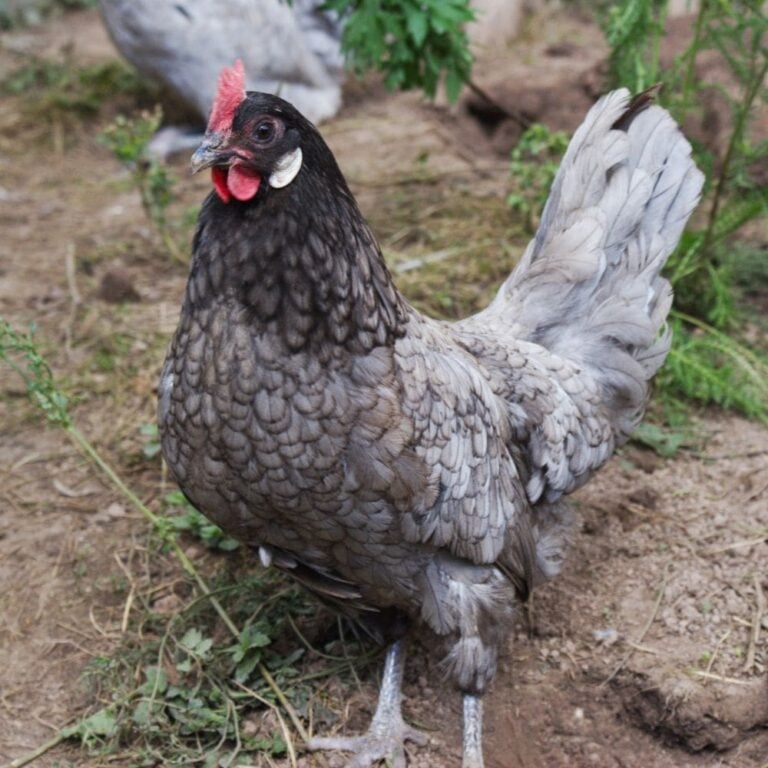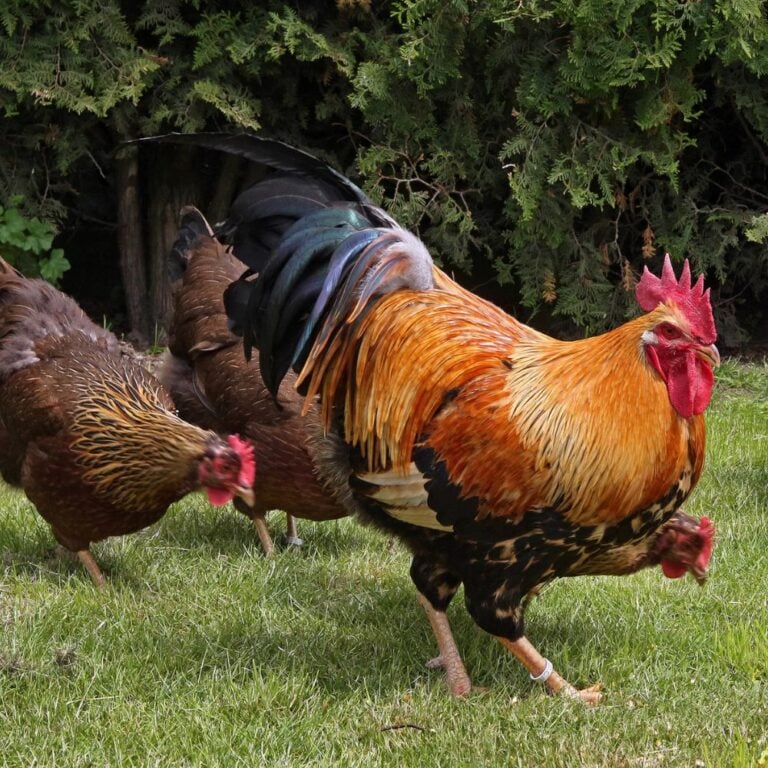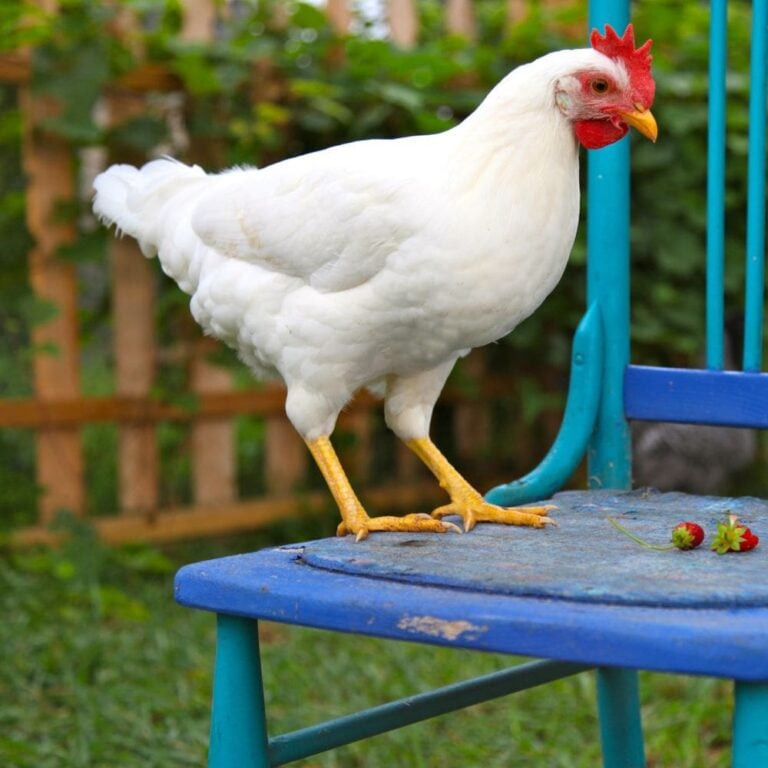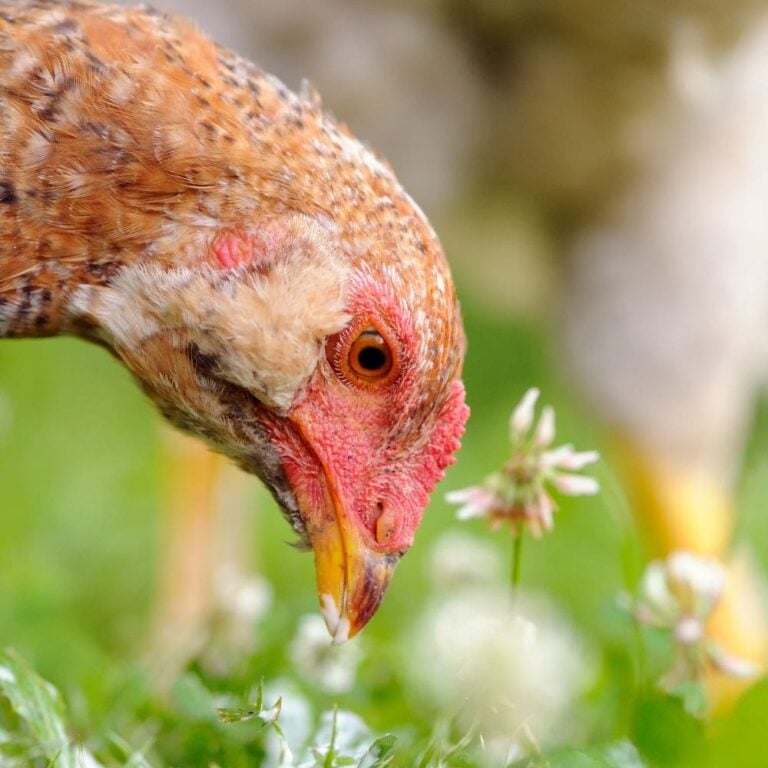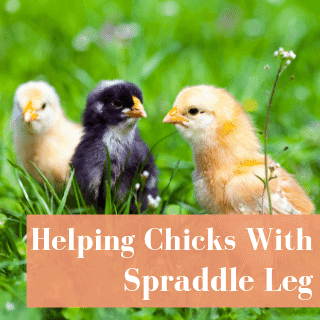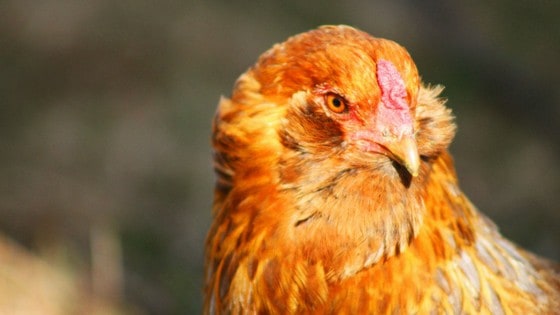Remembering back to the first and only time my flock ended up with Coryza (a respiratory infection) – I cringe. It was awful. I thought for sure they were all going to die. I also panicked about what to do with my coop and the brooding chicks I was getting ready to introduce to the flock.
Immediately searching all over the internet and checking with the vet and friends with chickens, I was quite surprised to find that there weren’t that many answers out there for me. That is why I feel compelled to educate other chicken lovers about Coryza in chickens.
Pull up a chair and learn a bit about this nasty respiratory infection so you can be proactive and prepared.
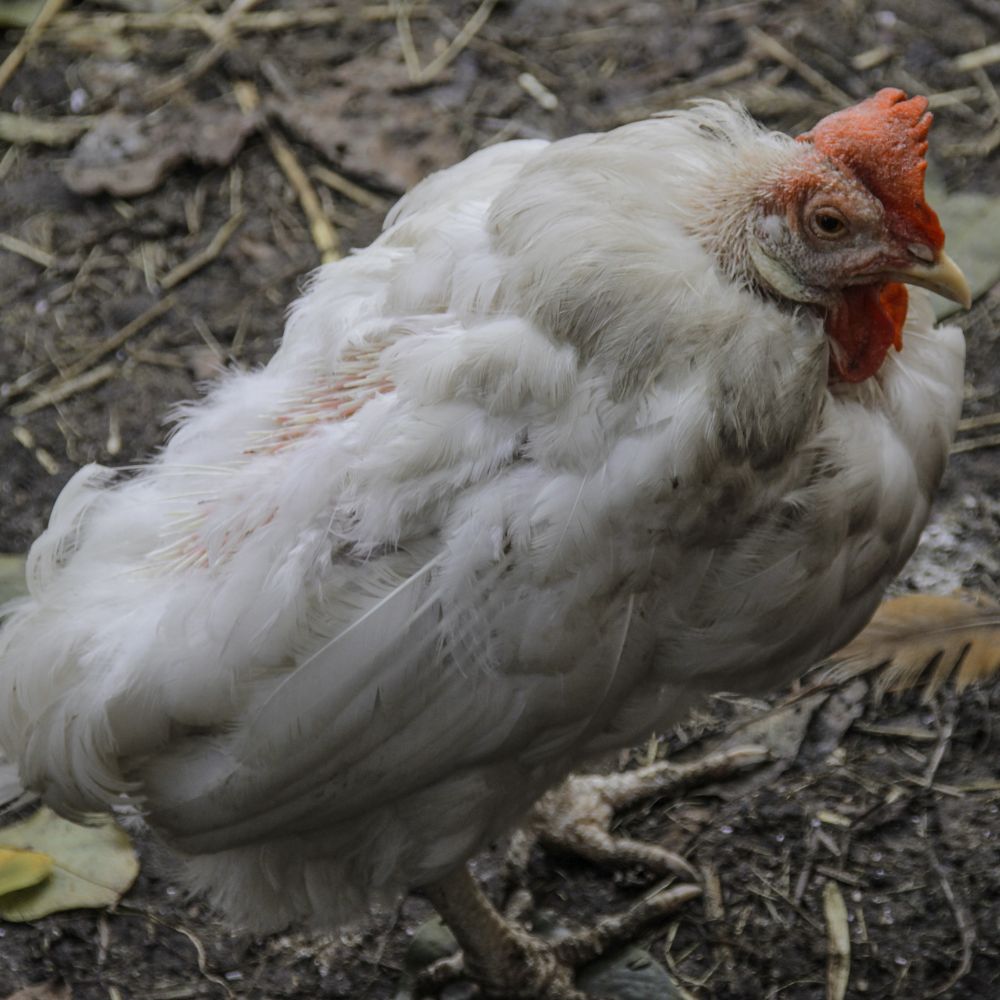
Table of Contents (Quickly Jump To Information)
What Is Coryza?
I’ll tell you in laymen’s terms here in just a bit. But first, let’s consult the professionals about poultry Coryza- the Merck Veterinary Manual.
Infectious coryza is an acute respiratory disease of chickens caused by the bacterium Avibacterium paragallinarum. Clinical signs include decreased activity, nasal discharge, sneezing, and facial swelling. Diagnosis is based on PCR assay, bacterial culture, or production of typical clinical signs in susceptible chickens following inoculation with nasal exudate from an infected bird. Early antibiotic treatment may help infected birds recover. Prevention is based on sound management practices, including appropriate biosecurity measures and vaccination with serovars present in the local population.
Merck Veterinary Manual
I promised laymen’s terminology, so here I go. It’s a common cold. However, it can be far more dangerous than a human cold so keep reading.
How Does Coryza Spread?
Coryza can be spread in several ways. It is commonly spread through teeny tiny droplets in the air (airborne), via contaminated water, feed, bedding, and directly between birds. Pretty much just like the human cold.
As we learned from Merck Veterinary Manual, this bug is caused by bacteria (or a bacterium) called Avibacterium paragallinarum. Big words, big problems.
What Causes Coryza in the First Place?
It is mostly found in overcrowded coops or coops that are not cleaned on a regular basis. Like most bacteria, it thrives, survives, and multiplies in dirty, damp, breeding grounds (i.e. a dirty coop without good ventilation).
However, I know from first-hand experience that a coop that is kept clean is not exempt from this bacteria. I’d say it’s rare, but it is possible.
Bringing new chickens from anywhere, such as a swapmeet, the fair, or a private seller, increases your chances of infecting your flock. Also, exposing your chickens to other places, like showing them at a fair, can be a risk too.
Am I telling you to never buy a chicken from an outside source again? Or am I telling you to never show your chickens? NO! We can’t live in fear. However, we need to use good judgment and adopt good hygiene management.
Large operations with huge layer flocks or meat birds are more likely to fight this bacteria simply due to the number of chickens they have.
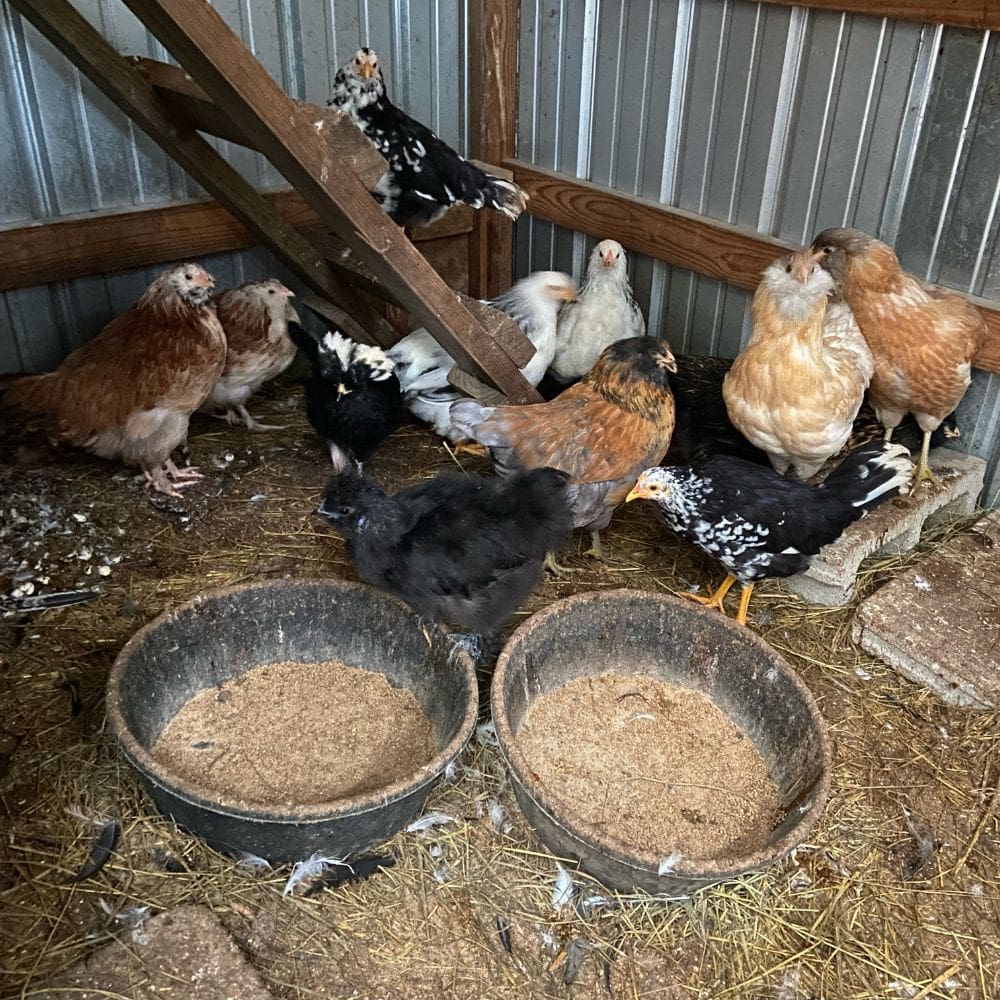
Incubation Period
How long does it take for this bacteria to be introduced before symptoms show their ugly heads? It only takes 1 to 3 days. The next couple of days following that will be the most noticeable symptoms.
Symptoms of Coryza
- Nasal discharge
- Lackluster in general
- Coughing sounds
- Lethargy
- Diarrhea
- Reduction in egg production
- Pale combs
- Conjunctivitis
- Rattling breathing sounds
- Heavy breathing
- Eye and nose discharge
- Sneezing (yes chickens can sneeze)
- Swelling of the face (in some server cases)
The one time my chickens had a respiratory condition, I first noticed when I went to close their coop door. I walked in and it sounded like a sick ward in the hospital. The sounds were almost like snoring sounds, but it was a crazy rattling sound in their breathing. Obviously their sinuses were not okay.
I couldn’t believe my ears. Thinking my flock was in danger caused panic down deep in my chicken-loving soul. I did find a solution which I will share with you after a little more info you need to know.
Can Humans Catch Coryza From Chickens?
Nope. This is refreshing news. Coryza is not a zoonotic illness which means it cannot pass between animals and humans (unlike the Bird Flu, which can). You won’t need to keep your kids away from your chickens.
Can I Eat Eggs From Chickens With Coryza?
Yes, you can. The bacteria does not make its way into your chicken’s eggs. This is also great news! While you are doctoring your flock, you can get all the energy you need from their eggs. The only downside is that, sometimes, their egg production will decrease when they aren’t feeling well.
Coryza Treatment
Ok, your chickens are sick. You suspect Coryza or your vet tells you that your chickens have this nasty bug. In my case, I don’t have a vet in the area that sees chickens so I either rely on Dr. Google or Dr. Me (or on a friend that has experience).
Coryza is a bacteria and therefore can be treated with antibiotics. Like humans, the type of antibiotic you need to use is based on the type of bacteria you have. This is the tough part if you don’t have a veterinarian that is willing to take a chicken as a patient.
If you have a vet (which would be great) that can run the tests you need, they can tell you exactly what kind of antibiotic you need to treat the particular bacteria. They will usually just need to see one chicken, not the whole flock and they will perform a bacteriologic culture or PCR assay.
The most common antibiotics used are streptomycin, erythromycin, or sulfonamides. Although Coryza is known to be resistant to sulfa drugs, but not always. It can depend on what region you live in.
Natural Remedies For Coryza
You can find many natural concoctions on the web to treat Coryza in chickens just like you can for humans. They are your chickens, and you have to decide what risks you are willing to take. Keep in mind there are risks with antibiotics as well. Do your research and make the best choice you can.
Garlic, ginger, honey, and lemon are some of the ingredients mentioned quite often. Cider, vinegar, and electrolytes are also very popular suggestions.
Keeping in mind that I am not a veterinary, nor am I a medical expert…I have my own personal story to share from when my flock was plagued with a horrible respiratory illness.
As I mentioned before, I don’t have a vet that takes chickens. So, I consulted with Dr. Google and decided I needed to find an antibiotic that I could put in my chickens’ water. After going to many stores, one nice clerk told me that a prescription is required for what I was looking for. She then went on to tell me about her Grandfather.
Apparently, her Grandfather would give his chickens certain herbs and spices for respiratory issues. I immediately went searching for more info. I gathered what I had available in my own pantry and served it to my very sick chickens.
It worked! It actually solved their problem in THREE days! I was truly amazed. So, what was this mix? It was simply a half cup of dried oregano, a half cup of powdered garlic, and a fourth of a cup of cayenne pepper. I mixed it all up and sprinkled a few tablespoons on the chicken feed each day twice a day.
I keep my coop clean, but I went ahead and gave it a thorough cleaning and spread some lime around before putting the sawdust mix I use for the floor. It’s important to remove all you can to avoid the continued growth of the bacteria.
This is a one-time anecdotal story, but it’s my story and I will stand by it. Another tip is that this mix can be used for prevention too.
Prevention Methods
How do you prevent an outbreak of this bacteria? Of course, there is no one way, it’s a combination of things. Some of these things will help prevent an outbreak, but will also help slow down the transmission of the bacteria.
- Keep your coop clean and dry
- Be sure to have proper ventilation in your coop
- Regularly clean the premises where the chickens spend most of their time
- Give your chickens vitamins (they need the extra support to boost immunity)
- Vaccinate your chickens
- Use herbs, spices, and other natural remedies and prevention recipes
- Quarantine or isolate new birds for 30 days before introducing them to your flock
- Use products like Breathright to give your flock a helping hand to respiratory health
As mentioned, large operations have the most risk. It’s especially important to consider vaccinations and other measures if you have a high quantity of chickens (more than just a backyard flock).
Can Chickens Die From Coryza
Even though this is the same thing as a common cold in humans, it can be much more dangerous for chickens. It can, and does, take their lives.
Oftentimes, when a chicken gets infected with this bacteria it can get a secondary sickness because its immune system is compromised. This is where they enter the danger zone most of the time. When they get an overload of things to fight off, they can have a decreased appetite and reduced water consumption. Both of those things are necessary for a happy, healthy life.
According to the Extension website, mortality can be as high as 50%, but 20% is more common. The disease can last as little as a few days or as long as a few months, mainly when secondary infections occur.
In the personal story I’ve shared with you, I did not lose a single chicken. Let that provide some hope for you if you are currently faced with this situation.
Summary
Coryza is a nasty bacteria that causes respiratory illness in chickens. It is similar to the common cold for humans, but poses a bigger risk for chickens.
Keeping a clean coop and providing high quality feed and vitamins for your flock is your best method of prevention. There are a few other things you can do which we discussed in this post.

A happy wife, mother, teacher, writer, hobby farmer, lover of chickens, and contributor to Pampered Chicken Mama!

